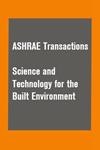使用智能恒温器覆盖数据,为改善小型商业建筑组合中的供暖、通风和空调系统调度提供见解
IF 1.6
4区 工程技术
Q3 CONSTRUCTION & BUILDING TECHNOLOGY
Science and Technology for the Built Environment
Pub Date : 2023-07-10
DOI:10.1080/23744731.2023.2234241
引用次数: 0
摘要
本文章由计算机程序翻译,如有差异,请以英文原文为准。
Using smart thermostat override data to provide insights for improving heating, ventilation, and air-conditioning system scheduling in a portfolio of small commercial buildings
Managers of small commercial building (SCB) portfolios need to understand occupant interactions with heating, ventilation, and air-conditioning (HVAC) systems to reduce energy use and greenhouse gas (GHG) emissions. In Canada, SCBs are currently underserved by energy conservation and thermal analysis tools because of their dispersion and lower payback potential. However, the emergence of smart thermostats (STs) and their central data collection platform provide a cost-effective solution to gather data from portfolios of SCBs and improve our understanding of occupant-HVAC interactions. This article analyzes the relationship between HVAC schedules (temperature set-points), indoor thermal conditions (dry-bulb temperature and relative humidity), and occupant behavior (thermostat overrides) in a portfolio of 30 SCBs in Ontario, Canada. The results reveal that temperature set-points were not properly selected in the portfolio of SCBs, leading to a large range of indoor thermal conditions and increased thermostat overrides. Specifically, the study demonstrates that building- and zone-specific HVAC schedules are necessary to minimize discomfort and reduce energy consumption in the portfolio of SCBs. The findings of this study can provide valuable insights for portfolio managers to improve HVAC schedules in a manner that reduces energy consumption and GHG emissions while accommodating occupants’ thermal comfort and productivity.
求助全文
通过发布文献求助,成功后即可免费获取论文全文。
去求助
来源期刊

Science and Technology for the Built Environment
THERMODYNAMICSCONSTRUCTION & BUILDING TECH-CONSTRUCTION & BUILDING TECHNOLOGY
CiteScore
4.30
自引率
5.30%
发文量
78
期刊介绍:
Science and Technology for the Built Environment (formerly HVAC&R Research) is ASHRAE’s archival research publication, offering comprehensive reporting of original research in science and technology related to the stationary and mobile built environment, including indoor environmental quality, thermodynamic and energy system dynamics, materials properties, refrigerants, renewable and traditional energy systems and related processes and concepts, integrated built environmental system design approaches and tools, simulation approaches and algorithms, building enclosure assemblies, and systems for minimizing and regulating space heating and cooling modes. The journal features review articles that critically assess existing literature and point out future research directions.
 求助内容:
求助内容: 应助结果提醒方式:
应助结果提醒方式:


